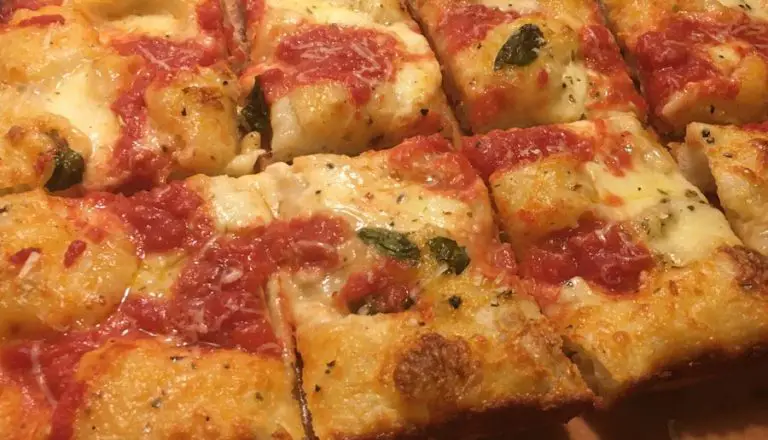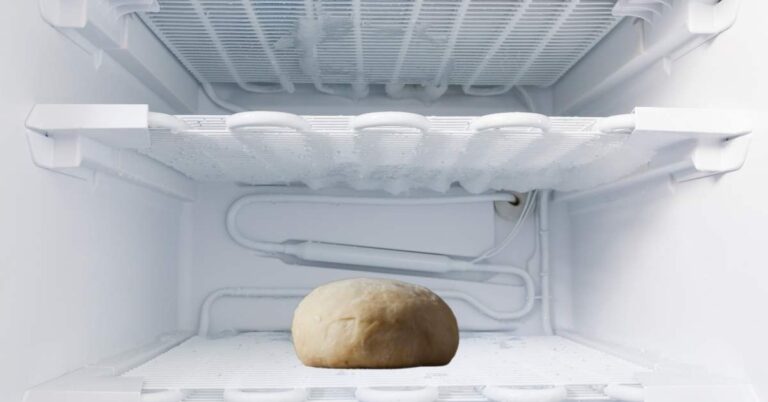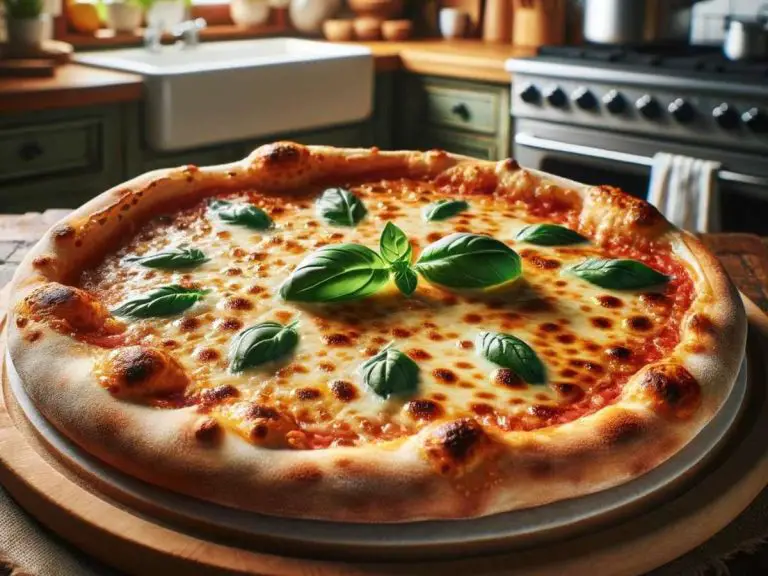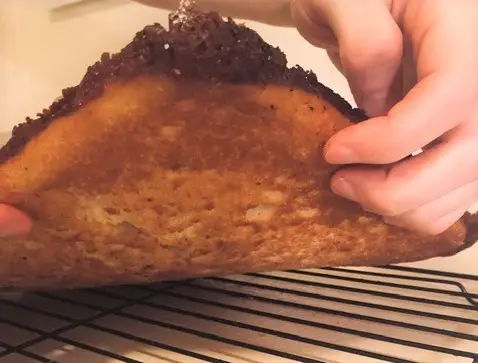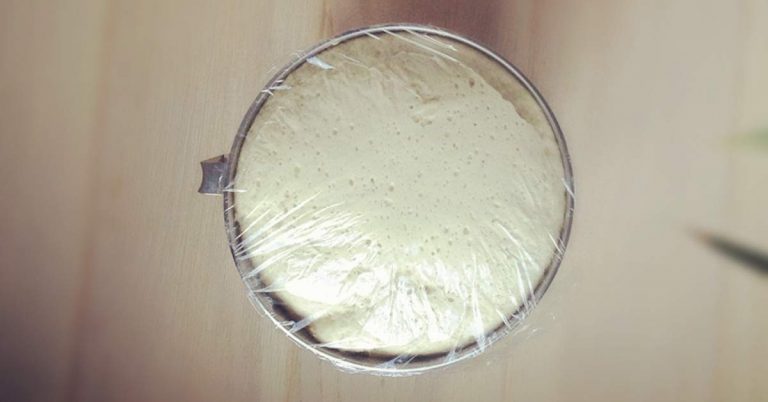Why Your Pizza Crust Isn’t Browning – How to Avoid Pale Pizza Crust (6 Tips)
One of the most common problems amateur pizza makers run into is a pale crust that doesn’t brown. This problem can be especially persistent if you’re using a home oven. Thankfully, there are only a few reasons why your pizza crust isn’t browning and several ways to fix it.
There are two primary reasons why your pizza crust isn’t browning: not enough heat, and too little sugar in the dough. Pizza crust browns as a result of a chemical reaction that happens at a high heat, but a home oven generally isn’t hot enough for this to occur. The remedy for a pale crust is simple—just add sugar to the recipe for a browned and caramelized exterior.
I’ll admit, it’s a little more complicated than just adding sugar to the recipe because the goal isn’t just to change the color of the crust. Rather, for the best results, you’ll need to tweak your recipe as well as your cooking methods just a little bit. Keep reading and I’ll explain why then show you how.
Alternatively, you can just use my homemade pizza crust recipe instead!
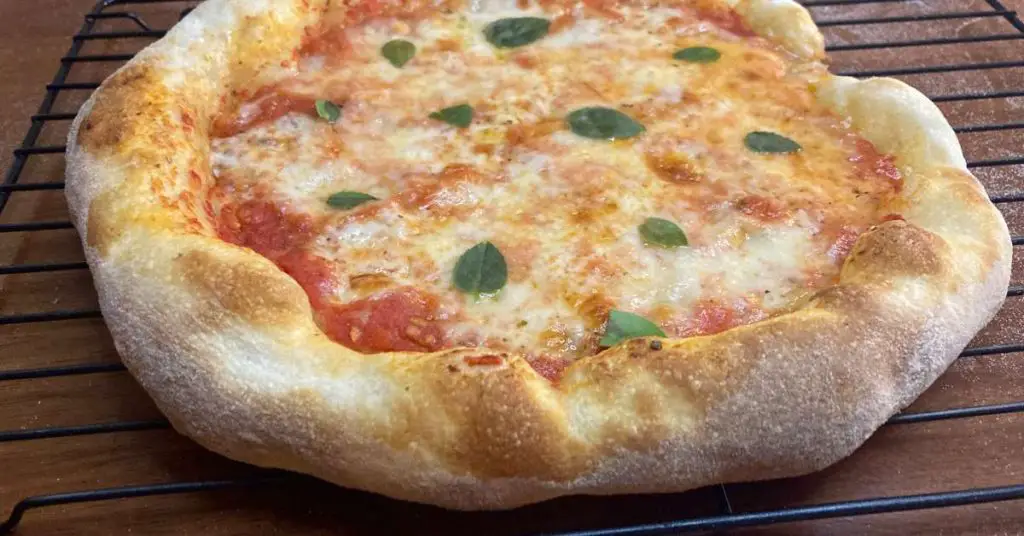
Pizza crust browns because of the Maillard reaction
Pizza crust doesn’t brown because the flour in the dough is burning, it’s actually the result of a chemical process called the “Maillard reaction”. This reaction occurs when the amino acids and sugars naturally present in the flour are drawn out and exposed to extremely high temperatures.
It’s actually the very same chemical process that occurs when you sear a steak or roast marshmallows over an open flame, and a big part of what makes those foods so delicious when cooked properly.
But here’s the problem—a regular home oven isn’t hot enough for the Maillard reaction to occur just using a standard pizza dough recipe with water, flour, yeast, and salt. Or rather, browning can and will occur in a home oven, but only after a very long time, and not before your pizza is turned into an inedible frisbee. At least not without a few tweaks to the recipe (and your cooking process).
This is why most people’s homemade pizza ends up with a pale crust, and why when they try to fix it by baking it longer it just burns instead.
Related Post: Why Your Pizza Dough Isn’t Smooth
Why Your Pizza Crust Isn’t Brown
Now, with the theory portion of this lesson out of the way, here are some specific things you’re doing (or not doing) that are giving you a pale pizza crust.
You didn’t add sugar to the dough
There is a myth circulating among online pizza makers that your pizza crust won’t brown if you’re using 00 or AP flour, but this simply isn’t true. I use 00 flour for almost all of my home oven pizzas, and they always brown and char perfectly.
For me, the secret is adding sugar to the dough, or honey in my case. In a high temperature pizza oven, sugars are naturally drawn from the flour and you get the Maillard effect. But at lower temperatures, you can get a similar effect by adding your own sugar so it doesn’t have to come from the flour.
For my homemade pizza dough recipe, I add several grams of organic honey to get a nice browning effect even though my home oven barely gets above 500F (compared to 800-900F in a wood-fired pizza oven).
Your oven isn’t hot enough
In a home oven set at a low temperature, you’re just not going to get much browning, with or without sugar. Instead, you should always aim for the highest temperature possible, especially when you consider that most home ovens are relatively inefficient and don’t actually hit the temperatures reported on the display.
At the highest temperatures, your crust will be able to brown without drying out the crust or burning it completely.
There are some exceptions to this, like Detroit and other pan styles of pizza. These are different because the pan itself brings a different level of direct heat exposure to the crust, and it also helps retain moisture that would otherwise dry out on a traditional pizza.
But even when making Detroit style, the temperature should still be in the 400-500F range. It’s cooked at a lower temperature because it needs to bake longer, and it’s the reason why sugar is almost always added to Detroit style pizza dough.
A pizza steel (or stone) really helps brown pizza crust
When making pizza at home, most people reach for a pizza pan—as in the thin round pan you can buy at a supermarket. It makes sense, it’s the perfect shape, but in most cases the cold pan just blocks heat from cooking the dough and results in an even paler underside of the crust.
There are a couple of ways to solve this, but the best is to use a pizza steel (or stone), which is basically a big slab of metal that heats up for about an hour in the oven. When you slide your pizza onto the steel, it starts cooking right away and gives the underside a lovely char.
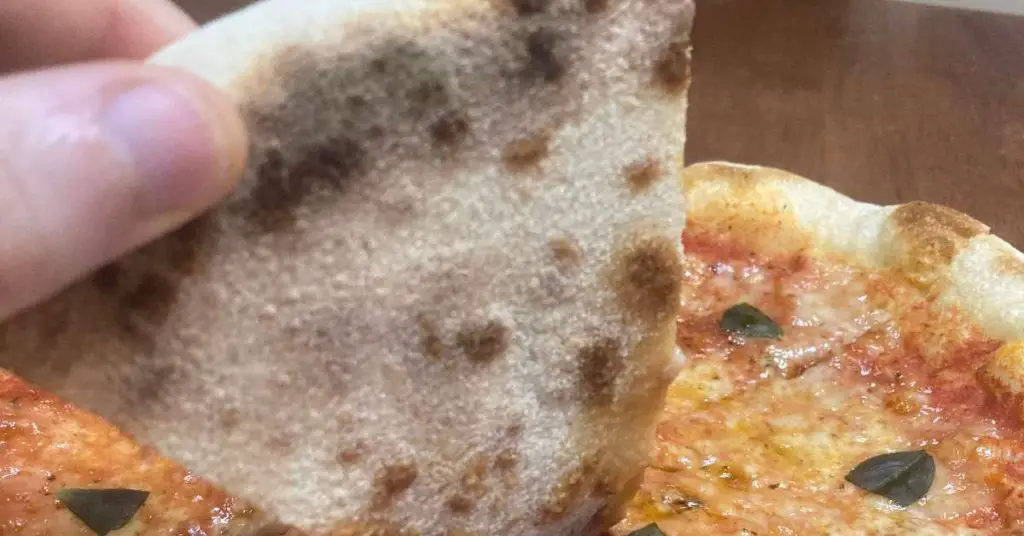
But I understand not everyone has a pizza steel or stone on hand, and using a pizza peel for the first time can be daunting. The next best thing is to simply cook your pizza on a piece of parchment paper using the middle rack of the oven. It won’t char like when using a pizza steel, but you should at least be able to get some light browning on the underside of crust, assuming you’ve added enough sugar to the recipe.
Over-fermenting (and Under-fermenting) can prevent browning
When yeast activates in pizza dough, it consumes starches and releases gas into the dough. This is partly the reason why pizza dough rises as it bakes in the oven. When the dough rises, the little bubbles that pop up are the first places to start browning, both because they’re higher than the rest of the pizza (closer to the heat) and thinner (so easier to brown).
But getting the right balance of gas and sugars in the dough requires a fermentation period that isn’t too long or too short. In case you’re not familiar, fermentation is what happens when you let dough rest (or “proof” or “rise”) after it’s been rolled into a ball before you start stretching it.
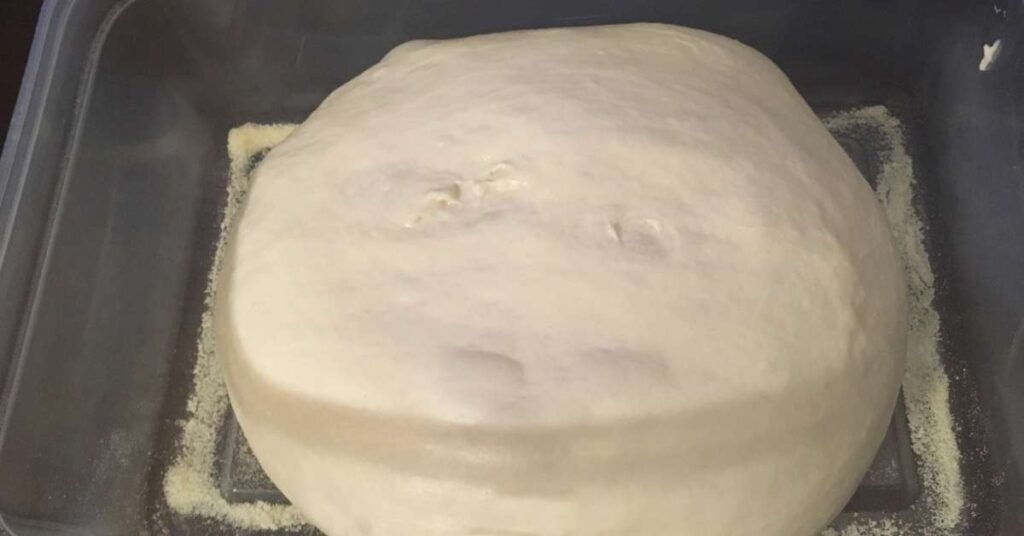
If you let your dough rest too long, it will exhaust the sugars and starches in the dough and deflate. But if you don’t let it rest long enough, it won’t ferment in the first place. Both result in a flat pizza dough that doesn’t rise in the oven and won’t brown properly.
Of course, proper fermentation doesn’t just affect browning, it also affects the taste and texture of the crust as well. A well fermented dough is absolutely key to making a good pizza in any kind of oven.
How to avoid pale pizza crust
There are lots of ways to address a pale pizza crust that isn’t browning, but the best way to is to use multiple methods. The following are a few of them.
Let your pizza dough proof at room temperature for several hours before baking
Here’s the basic set of steps you’ll need to follow to properly proof your pizza dough:
- Mix the ingredients and knead the dough until it’s smooth (make sure it passes the “window pane test”)
- Divide the dough into individual pieces, then roll each piece into a tight ball.
- Place each ball into a lightly oiled container and let it proof for an appropriate amount of time (30 mins to 6 hours)
Now, the key word here is “appropriate”, because it’s going to vary depending on how much yeast you used. In my recipe, I use a small amount of yeast and let it proof (or ferment) for 5-6 hours, but other recipes typically call for much more yeast (an entire 5g packet in many cases) and a shorter proofing time (1 hour or less).
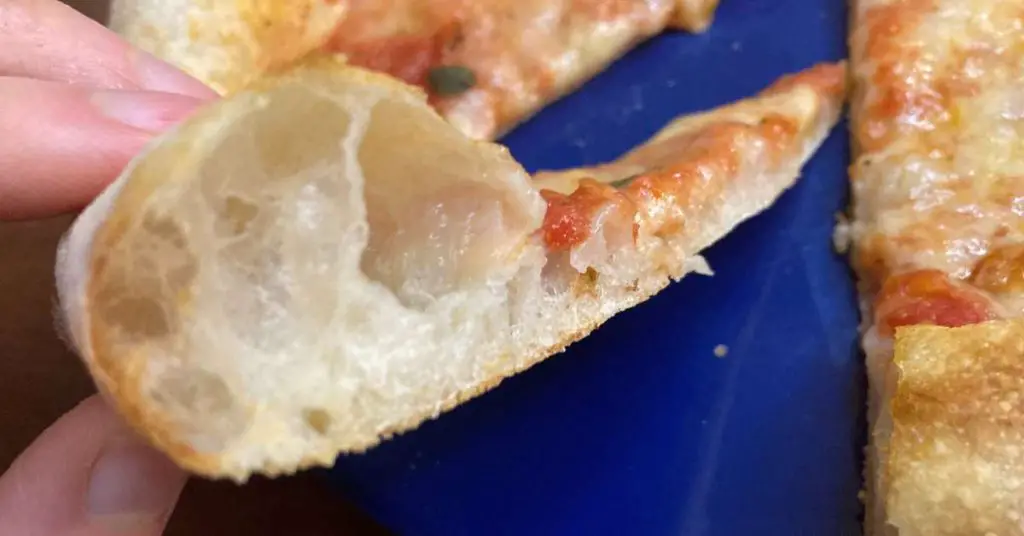
Whichever you choose is up to you, but you’ll know the dough ball is proofed long enough when it’s puffed up with air and very relaxed. When you shape the dough into a pizza and bake it, it should brown nicely.
Adding Sugar to the Dough helps the crust brown
We’ve gone over this, but to reiterate, adding extra sugar to your dough allows it to brown and benefit from the Maillard effect under the lower maximum temperatures of a typical home oven. I always add some honey to my home oven pizza doughs, and even to some pizza oven doughs because it helps with fermentation.
In most cases, the honey won’t actually sweeten the taste of the dough, but the improved fermentation it allows for will enhance the flavor of the crust in other ways. If you’ve never fermented your pizza dough before, you’re missing out on so much texture and flavor.
| Dough ball weight | Percent sugar needed | Honey/sugar amount | honey/sugar amount |
|---|---|---|---|
| Up to 250g | 1-2% | 2.5-5 ml | 0.5-1 tsp |
| 250g – 500g | 2-3% | 5-15 ml | 1-3 tsp |
| Above 500g | 3-4% | 15-20 ml | 3-4 tsp |
Malt flour indirectly adds sugar to your pizza dough
Besides adding sugar directly to your pizza dough, there are some other ways to do essentially the same thing indirectly. One of those ways is by adding malt flour to your pizza dough recipe.
Malt flour is simply a kind of flour made from barley that’s sprouted in water, then dried and ground into a powder. During the drying process, certain enzymes are produced (amylase) that help to break down the starches in the flour into sugar.
So that means if you add some malt flour to your regular flour, you indirectly increase the amount of sugar in the recipe which enhances the Maillard effect and helps brown your pizza crust in the oven.
Personally, I don’t use malt flour in any of my pizza dough recipes because I prefer the more authentic flavors and textures of 00 or AP flour combined with organic honey. That said, I have nothing against it and encourage anyone with some malt flour on hand to give it a try—you still might want to add some honey though for maximum browning.
Final Thoughts
To sum up what we’ve gone over here, just remember that if you want your pizza crust to brown, you need a super hot oven and enough sugar in your dough, especially if you’re baking it in a regular home oven.
Here’s your checklist for the next time you’re making pizza to get a browned crust:
- Add honey to your dough recipe—for a 500 gram ball, I add about 8-10 grams of honey. If you don’t have honey, regular sugar works fine.
- Try using malt flour, if you have it. You generally want to add 1-2 teaspoons of malt flour for each cup of regular flour, but this will vary depending on if you’re using diastatic or non-diastatic.
- Use a pizza steel! I can’t emphasize enough how much of a difference this will make to your pizza in terms of browning and texture. Pizza steels are not expensive (about $100), but if you can’t fit it in your budget, a pizza stone is much cheaper and works great as well.
- Properly proof your dough ball before stretching it into a pizza to help it rise and brown in the oven.
If you’re unsure about how to implement all this into your own pizza dough recipe, just follow my homemade pizza dough recipe and leave the details to me.
Have a question about any of this? Leave a comment below and I’ll get right back to you. Good luck!
The top of my pizza crust is pale, but the bottom is brown. What’s happening?
If the top of the crust is pale while the bottom is brown, you probably haven’t added enough sugar/honey to the recipe. For a 500g dough ball, I recommend adding 8-10 grams of honey. Alternatively, place your pizza steel or stone on the top rack of the oven so the top of the crust is nearer to the heat.


